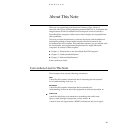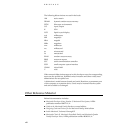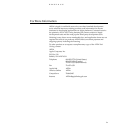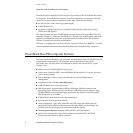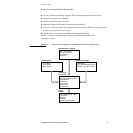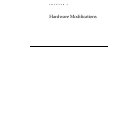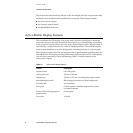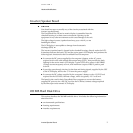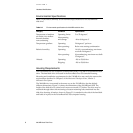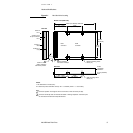
CHAPTER 1
Introduction to the PowerBook Duo 250 Computer
2
PowerBook Duo 250 Computer Features
The Macintosh PowerBook Duo 250 computer is a member of the PowerBook Duo family
of computers. It has all the basic features of the PowerBook Duo computer but also has
certain new features which are described in this note. These features include
■
an active-matrix (AM) 16-level grayscale display
■
a 200 MB hard drive
■
an inverter/speaker board that is compatible with both film super-twist nematic
(FSTN) and AM displays
The computer uses the same 33 MHz 68030 microprocessor as the PowerBook Duo 230
computer. Chapter 2, “Hardware Modifications,” describes the modifications made to the
original PowerBook Duo computer to implement the PowerBook Duo 250 computer.
Chapter 3 describes the software modifications.
This note is a supplement to the
Macintosh Duo System Developer Note
, R0457LL/A, which
contains detailed information about the basic Macintosh PowerBook Duo computer.
PowerBook Duo 250 Computer Features 1
Features of the PowerBook Duo 250 computer are listed below. Items in boldface type are
unique to the PowerBook Duo 250 computer, and are described in more detail
later in this note. All other items are discussed in detail in the
Macintosh Duo System
Developer Note
.
■
main processor: 33 MHz 68030 microprocessor
■
main system controller (MSC): controls DRAM, ROM, built-in I/O, sound, and some
power-saving features
■
Power Manager: a custom microcontroller that provides intelligent power
management
■
integral hard disk: 120 MB or
200 MB capacity
■
4 MB of DRAM on the main logic board
■
DRAM connector: accommodates 4 MB or 8 MB Apple DRAM expansion card,
expanding system DRAM capacity to 8 MB or 12 MB; third-party developers using
15-Mbit DRAMs and current packaging techniques can design a card that expands
DRAM capacity up to 24 MB
■
1 MB of ROM: stores system and configuration data.
■
active-matrix 16-level grayscale display
■
video components: a gray-scale controller chip (GSC) and video RAM; the GSC
controls the interface between the processor, the Video RAM, and the display; the
VRAMs store the data required to write and refresh the display
■
inverter/speaker board
compatible with both FSTN and AM displays
■
Combo chip: includes the Serial Communication Controller (SCC) and Small
Computer System Interface (SCSI) controller






